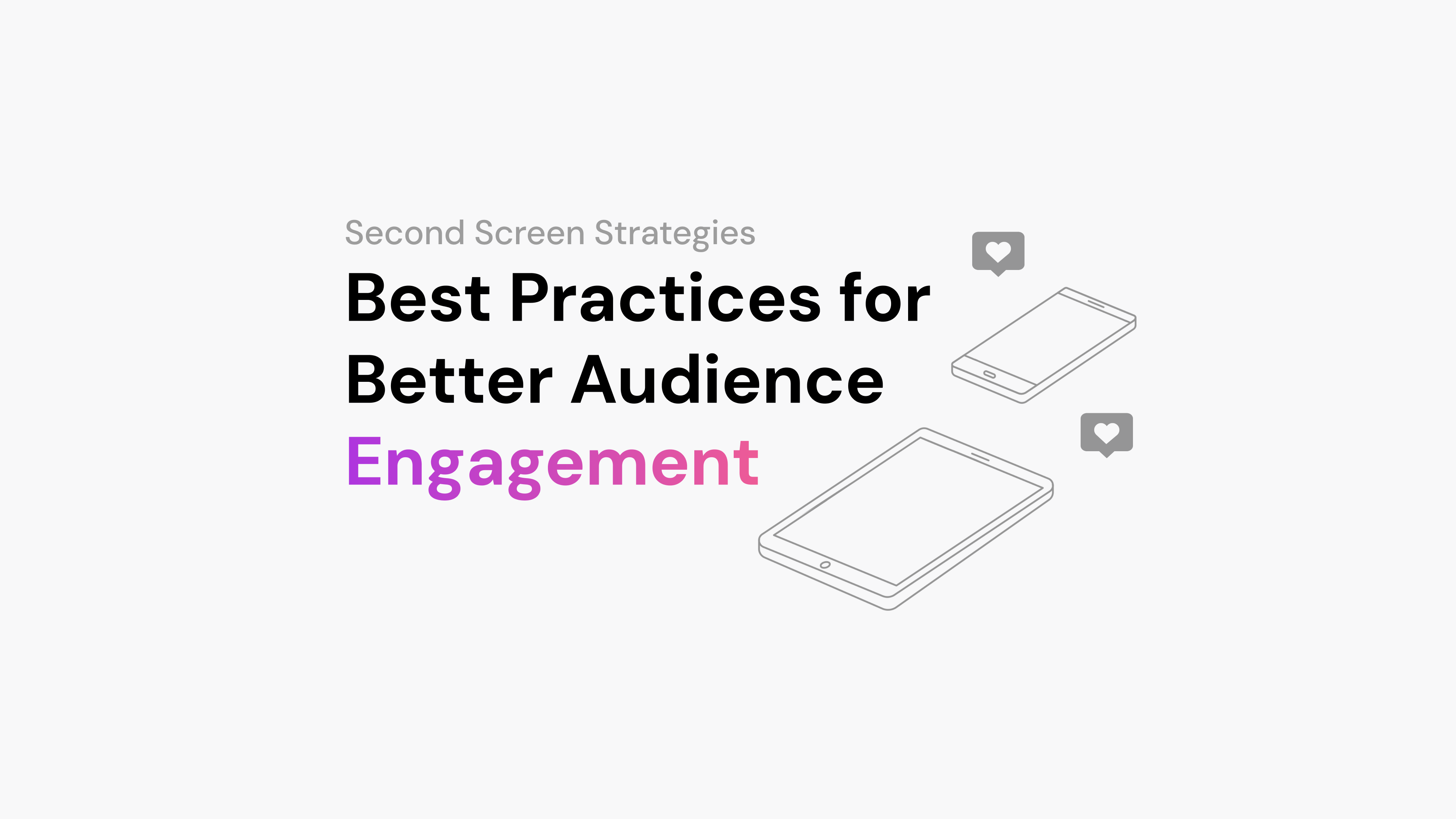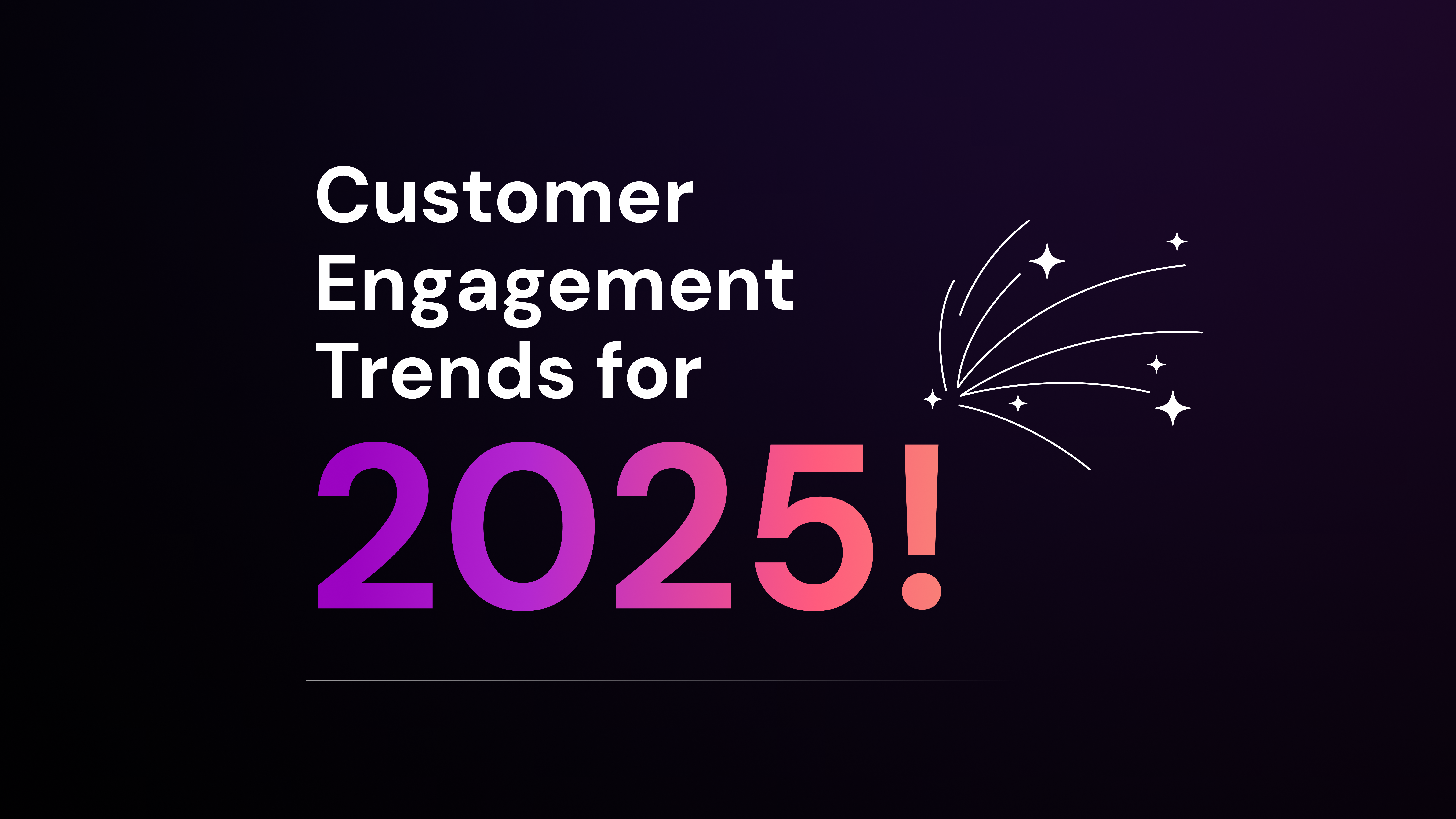Discover how to transform your business with a second screen technology by enhancing user interaction and engagement, improving your employee’s work experience, and boosting sales.
Types of Second Screen Applications
Second screen applications come in various forms that businesses can use to enhance customer interaction.
Interactive Content Platforms
Interactive content platforms allow customers to access additional content on a second device while engaging with primary content. Viewers can participate in:
- Live polls and quizzes during events or broadcasts
- Real-time Q&A sessions with presenters or experts
- Access to exclusive behind-the-scenes content
- Augmented reality experiences that complement the main content
These platforms encourage active participation, engaging viewers more deeply. Companies can gather valuable insights into customer preferences through these interactions.
Dual-Monitor Workstations
Using two screens simultaneously in dual-monitor workstations can boost productivity and multitasking. Employees gain more screen space to manage multiple applications or documents. According to an article on Business.com, dual monitors can save time and increase efficiency by reducing the need to switch between windows. For customer interaction, dual-monitor setups can enhance support services by allowing agents to access customer information on one screen while communicating on another.
Mobile Companion Apps
As a second screen, mobile companion apps complement the primary experience. Businesses can develop apps that sync with their products or services, offering additional features and content. Examples include:
- A retailer’s app providing extra product details or exclusive offers while customers shop in-store
- A media company’s app offering synchronized content, interactive features, or social integration during broadcasts
- An educational app that allows students to access supplementary materials while attending a lecture
A well-designed companion app can increase user engagement and offer cross-platform marketing opportunities.
How Does Second Screen Technology Enhance Customer Interaction?
Second screen technology enhances customer engagement by adding an interactive layer to the primary content. By incorporating additional devices like smartphones or tablets, you create a dynamic experience for your audience.
Create Engaging Experiences
Second screen technology allows you to provide experiences that go beyond passive viewing. You can develop interactive content such as live polls, quizzes, and games, or explore the benefits of live blogging that customers can engage with while interacting with your main product or service. This encourages active participation and strengthens the connection between your brand and customers, especially when tapping into the second screen habits of Gen Z.
Offering features like virtual try-ons and augmented reality can enhance the customer experience, helping them make more informed decisions. These AI-powered AR tools allow customers to visualize products in realistic and personalized ways, such as seeing how furniture fits in their homes or how clothing looks on them. This makes the experience more memorable and personal, and adopting effective community strategies with Arena can further enhance customer interaction.
Facilitate Real-Time Engagement
Second screen technology enables real-time interaction with your audience. Implementing one-to-one live video shopping can engage customers by providing interactive product demonstrations and addressing questions in real-time, offering a shopping experience that parallels an in-store visit.
Integrating social media features, such as live chat for customer service, into your second screen experience can further enhance real-time engagement. In a transforming social media engagement landscape, encouraging customers to share their experiences, participate in live chats, or use branded hashtags helps build a community and keeps the conversation around your brand active. By enhancing engagement with live chat, you allow customers to communicate directly, fostering a sense of community.
Using second screen technology makes customer interactions more engaging and immediate, enhancing the customer experience and fostering loyalty.

How to Implement Second Screen Strategies in Business
Implementing second screen technology strategies can enhance customer engagement and open new avenues for growth.
Integrate with Existing Systems
Seamless integration with your current systems is crucial for a smooth user experience. When deciding to build or buy second-screen solutions, choose platforms compatible with your infrastructure that can scale as needed. Ensure that content syncs in real time across all devices to maintain consistency. Compatibility across various devices and operating systems allows you to reach a broader audience without technical hurdles. For example, when implementing live video shopping, select a platform that integrates with your e-commerce system to enable instant purchases during live streams.
Train Teams for Dual-Screen Workflows
Your team’s proficiency with dual-screen workflows directly impacts the success of your second screen strategies. Provide training sessions to familiarize staff with new technologies and processes. For instance, in one-to-one live video shopping, staff should be comfortable interacting with customers on one screen while managing product information on another. Role-playing scenarios and practice sessions can help your team build confidence and deliver a smooth experience to customers.
Develop Interactive Content
Creating engaging and interactive content is key to capturing your audience’s attention. Develop elements that encourage active participation, such as polls, quizzes, or games on the second screen during events or presentations. Offering exclusive behind-the-scenes content or additional information can also keep viewers engaged. For example, a companion app can provide real-time stats during a live sports event, helping to engage Gen Z sports fans and enhancing the viewing experience, contributing to the future of sports broadcasting. Incorporating augmented reality features can allow customers to virtually try products on their devices while exploring your offerings on the main screen.
5 Tips for Boosting Sales with Second Screen Technology
Implementing second screen strategies can significantly enhance customer engagement and increase sales. Here are five practical tips to help you make the most of this technology.
Use Interactive Content
Interactive content on the second screen transforms passive viewers into active participants. Consider incorporating:
- Live polls during product launches or events
- Q&A sessions with product experts
- Interactive catalogs that customers can browse while watching a main presentation
These elements, along with boost engagement with push notifications, foster a stronger connection between your brand and customers, encouraging them to engage more with your products.
Incorporate Personalized Offers
Utilize data from second-screen interactions to provide personalized offers. For example:
- Suggest complementary products based on viewing history
- Offer exclusive deals on items a customer has shown interest in
- Provide tailored content that matches individual preferences
Personalization enhances the customer experience and increases the likelihood of purchases.
Enhance Virtual Shopping Experiences
Use second screen technology to create engaging virtual shopping experiences by implementing successful live shopping strategies. Implement features like:
- Live stream eCommerce to transform online shopping into an engaging, entertaining event with detailed product demonstrations
- Collaborations with influencers to enhance the entertainment value and showcase products effectively
These approaches build customer confidence and can lead to higher conversion rates.
Use Data Analytics
Collect and analyze data from second-screen interactions to gain valuable insights. Understanding your real-time audience insights allows you to track metrics such as:
- Engagement levels and time spent on interactive features
- Conversion rates linked to second-screen activities
- Customer feedback and preferences
This information helps refine your strategies and target your marketing efforts more effectively.
Optimize User Interfaces
Ensure your second-screen experience is user-friendly and intuitive. Focus on:
- Designing interfaces that are easy to navigate on smaller screens
- Ensuring content is mobile-responsive and works across various devices
- Providing smooth integration between the main and second screens
A well-designed user interface enhances the customer experience and encourages continued engagement.
Benefits of Using Second Screen Technology
Using a second screen offers several advantages for your business, enhancing customer interaction and improving team productivity.
Enhance Customer Engagement
A second screen allows real-time interaction with your audience. For example, you can:
- Provide additional content and context to enrich the main experience
- Enable customers to participate actively during events or presentations
- Use companion apps to offer exclusive content, polls, or games
This approach, especially when you enhance engagement with community tools, engages your audience more deeply and builds a stronger connection with your brand.
Improve Productivity
A dual-monitor setup can boost efficiency. With two screens, employees can:
- Multitask more effectively by having multiple applications open
- Reduce time spent switching between tasks
- Organize their workspace for better focus
Using multiple monitors can significantly increase productivity (link).
Deliver Personalized Experiences
A second screen enables you to tailor content to individual customer preferences, often utilizing AI in e-commerce. You can:
- Offer customized product recommendations
- Provide personalized offers during live events
- Implement one-to-one live video shopping experiences
By delivering personalized experiences, you enhance customer satisfaction and encourage repeat engagement.
How to Improve Remote Work with Dual-Screen Solutions
Using dual-screen setups can greatly enhance remote work by increasing productivity and fostering better collaboration.
Set Up Efficient Workstations
Setting up dual monitors can double your workspace, allowing you to view multiple applications side by side. This setup reduces the need to switch between windows, making tasks faster and more efficient. For example, you can keep your email open on one screen while editing documents on the other. This is especially helpful when you need to reference information from one source while working on another.
To replicate your office setup at home, consider using remote desktop software that supports multiple monitors. This allows you to access your work computer remotely and maintain the same multi-monitor configuration. Tools like Splashtop enable smooth remote access with dual-screen support.
Encourage Team Collaboration
Dual-screen solutions can enhance team collaboration in remote settings. During virtual meetings, you can display the video conference on one screen while accessing notes or documents on the other. This enables you to stay engaged in the meeting without losing access to important information.
Screen sharing becomes more effective with dual monitors. You can share one screen with your team while keeping your notes or other applications private on the second screen. This facilitates real-time collaboration and improves communication among team members, making remote or hybrid work environments more productive.
Embracing second screen technology offers a way to improve your business, enhancing productivity and customer engagement, and opening new avenues for growth. By integrating these strategies, you can create engaging experiences, foster real-time interactions, and stay ahead in today’s competitive market.
Ready to see the impact of an effective brand community on your bottom line? Sign up now at Arena and start leveraging our powerful features to boost engagement and retention. Join thousands of brands that trust Arena to turn visitors into loyal customers.



